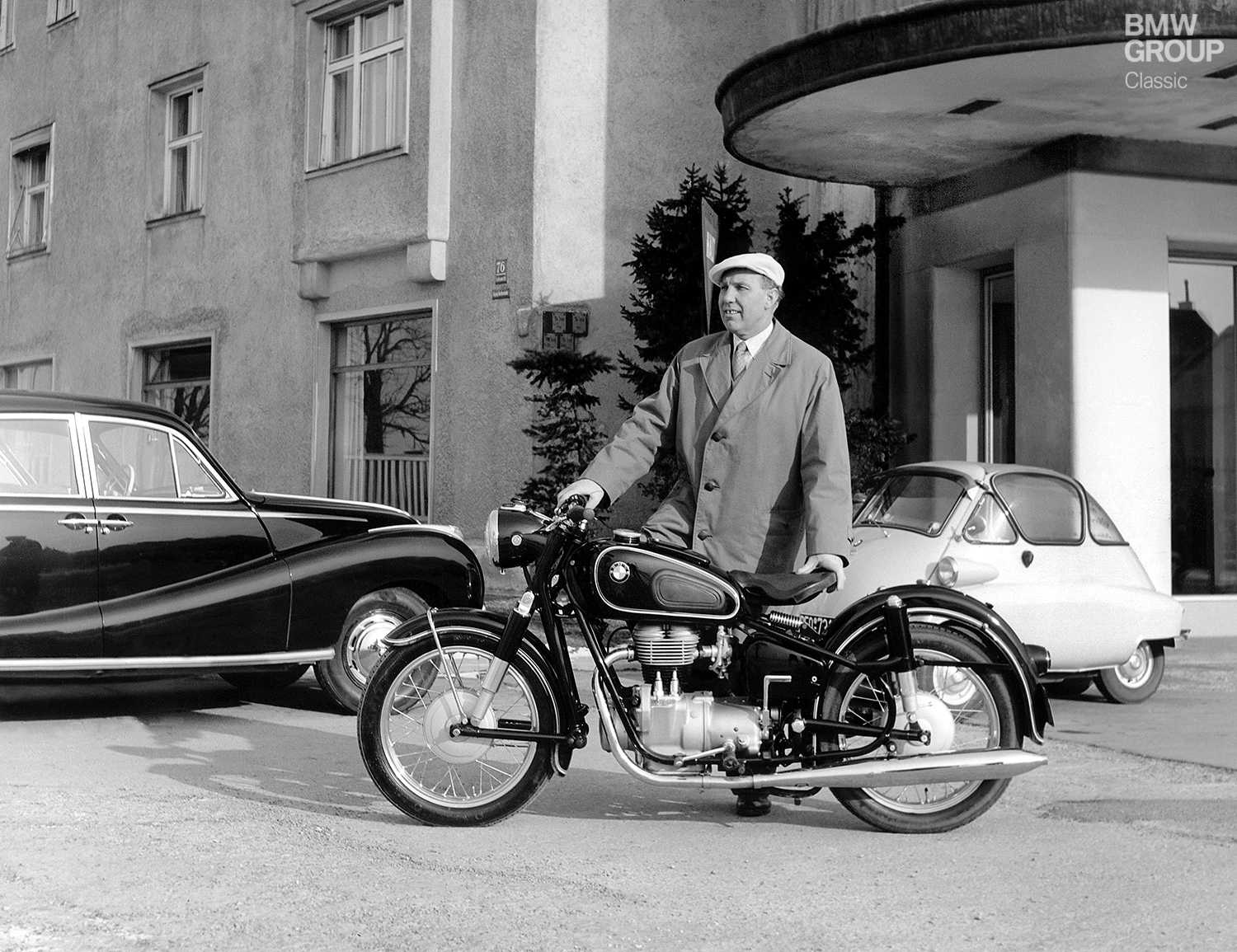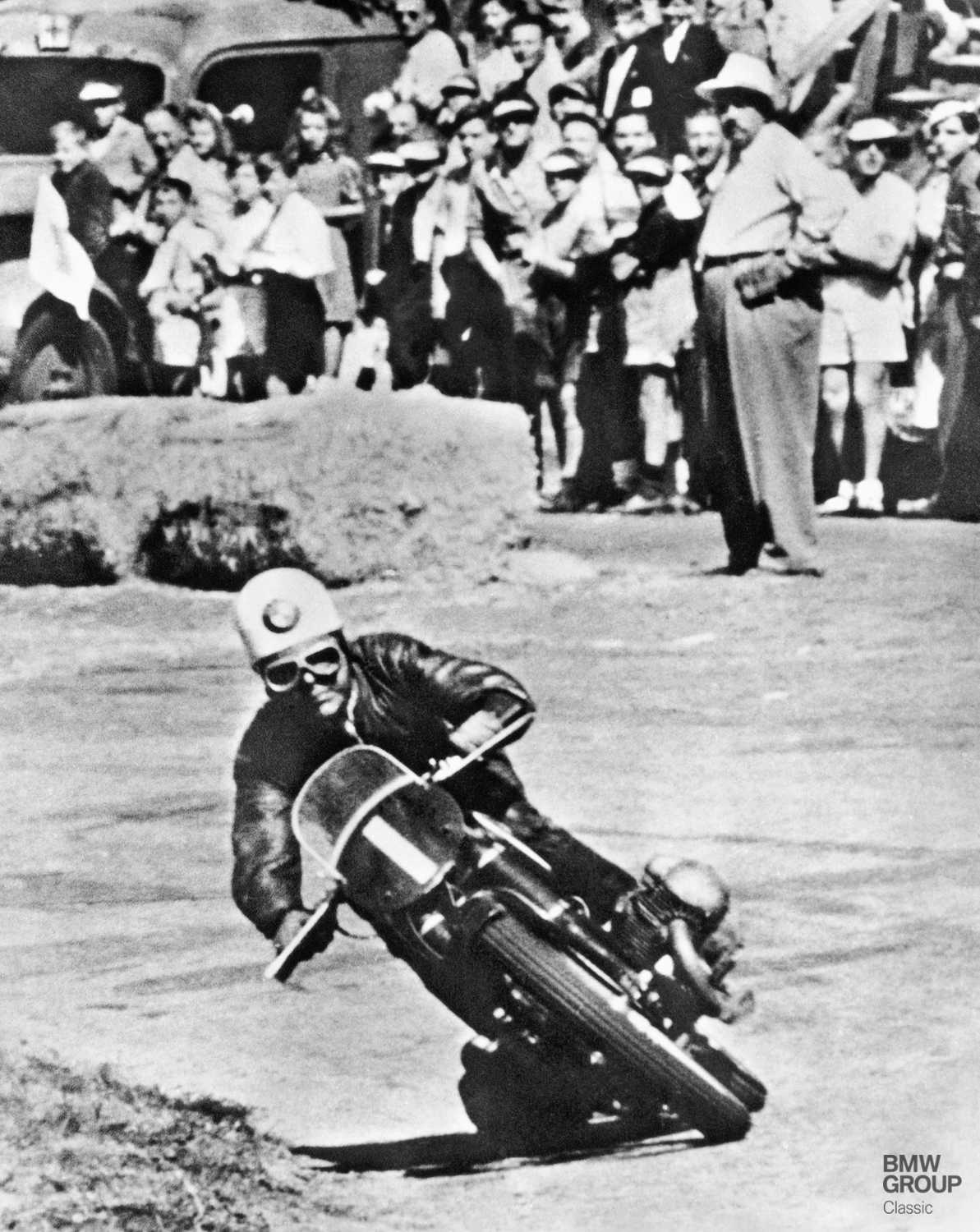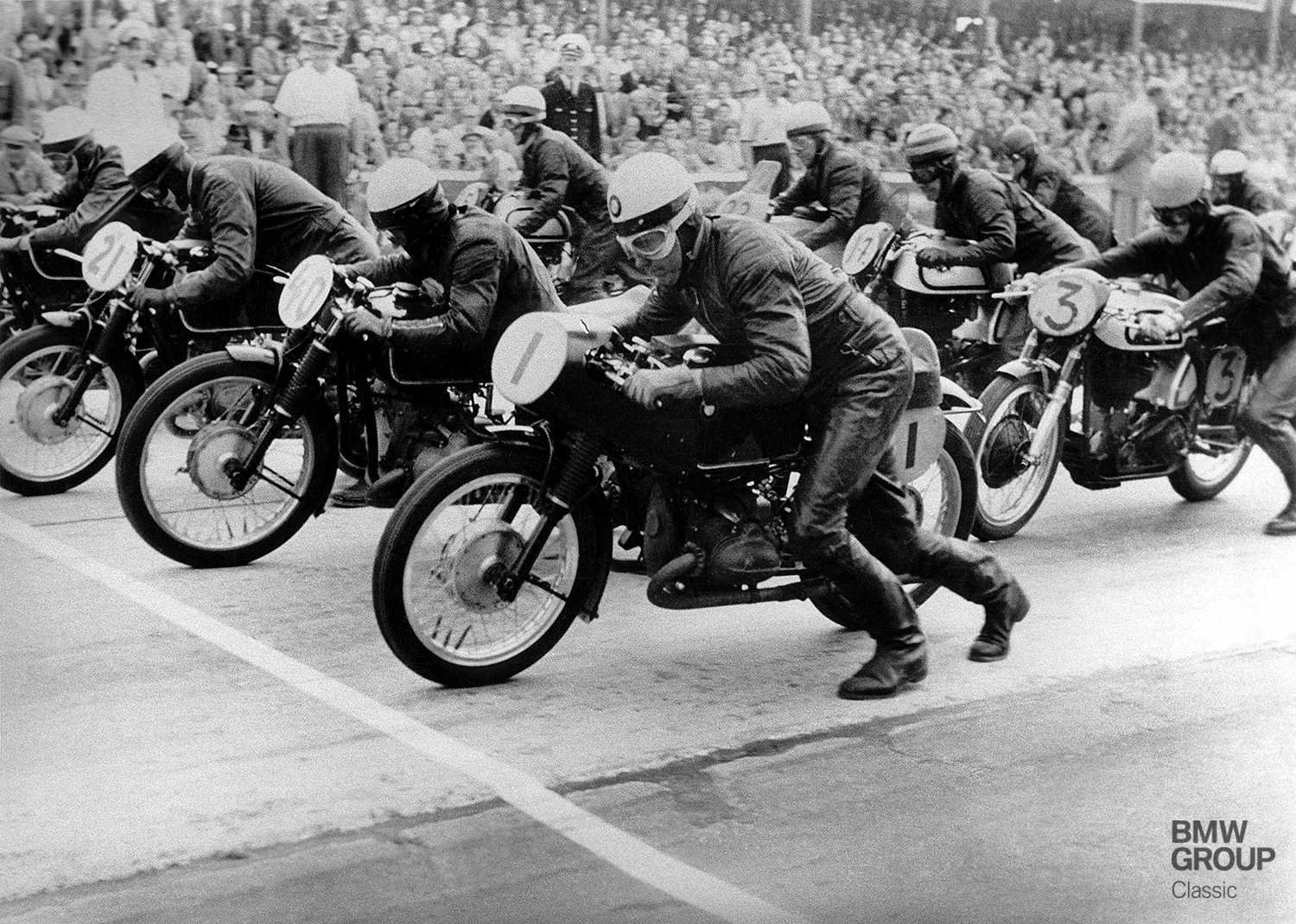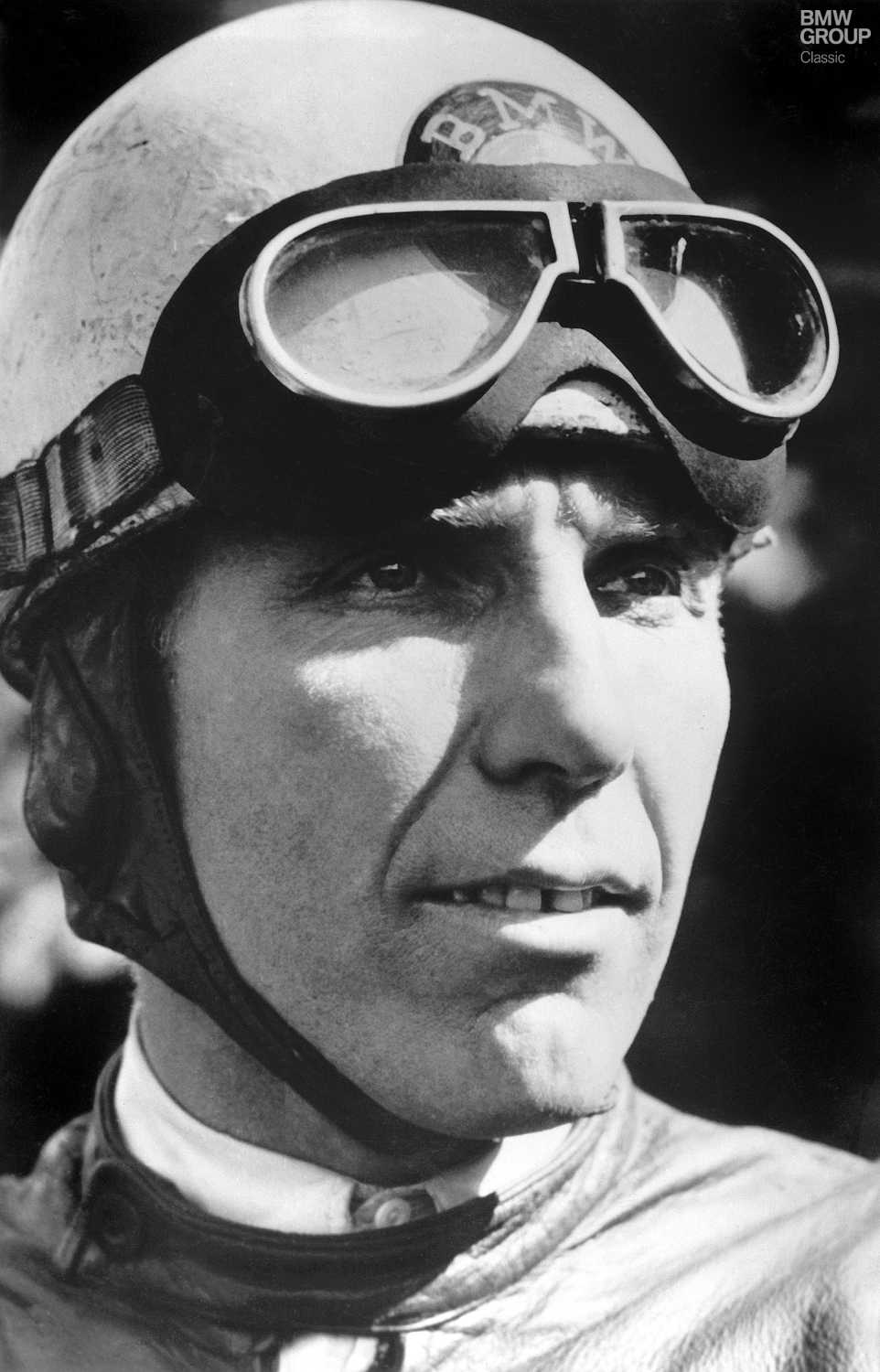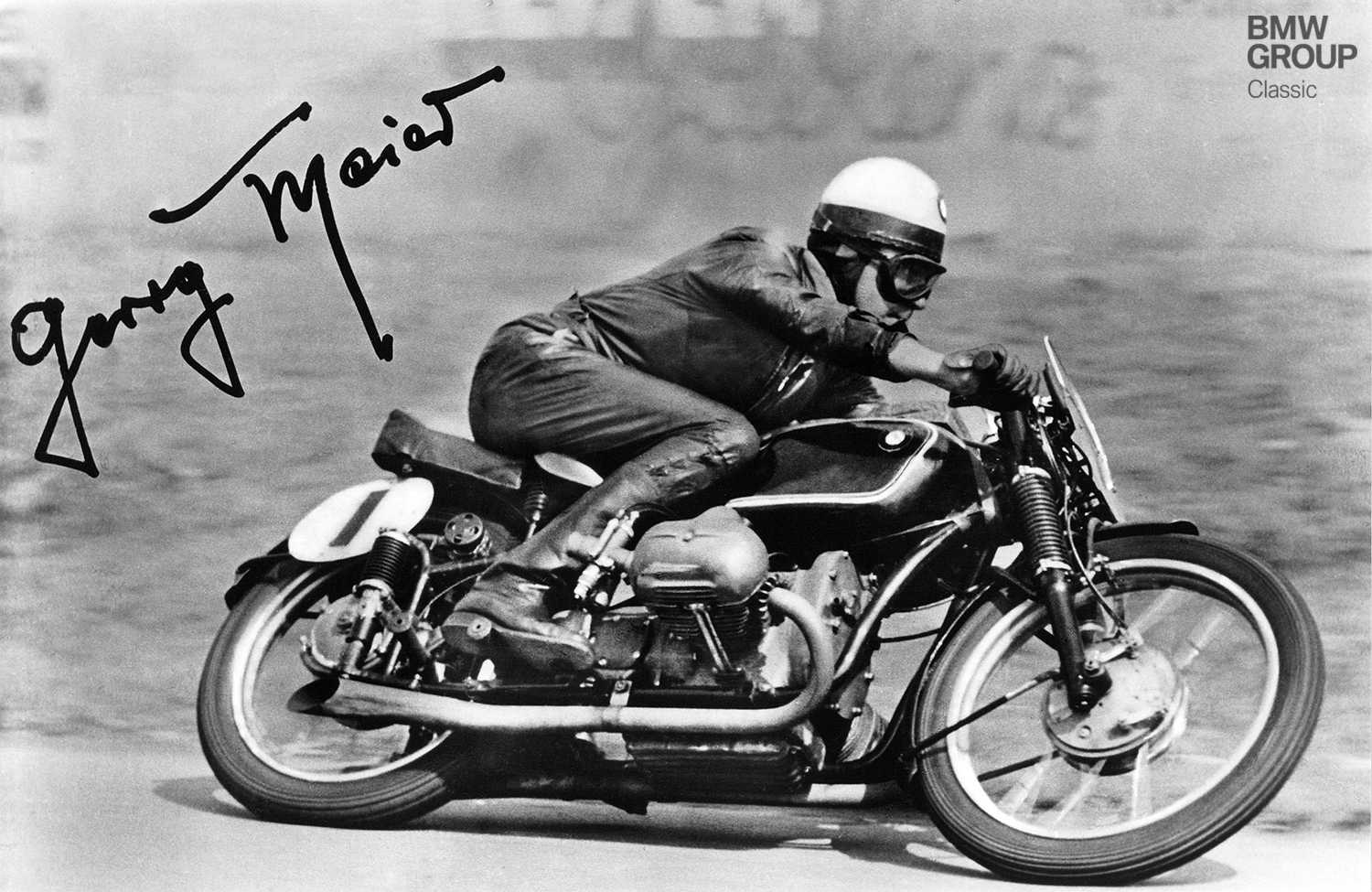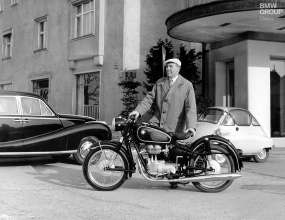Georg “Schorsch” Meier turned his childhood dreams of becoming a racer into reality – and went on to reach the very pinnacle of his sport. The Second World War put his racing exploits on hold. But once hostilities had ceased, Meier wasted little time in organising the first races of the post-war era – and promptly stamping his class on them. He also started his own company and enjoyed great success selling cars and motorcycles made by the brand with which he enjoyed a lifetime bond: BMW.
Georg Meier was born in Mühldorf am Inn, Bavaria, in 1910, and soon became known as “Schorsch”. His father was a railwayman and the family (Georg was one of seven children) lived a modest life. Although Schorsch’s excitement for motorcycles was evident at an early age, his stated desire to become a policeman or racer when he was older fell largely on deaf ears. He began a mechanic’s apprenticeship at 15, but it was another two years before he had his own two-wheeler – and that was a bicycle. No matter, he still wanted to go racing and promptly lined up for an event around Bavaria’s Chiemsee lake. The youngster finished in 12th place, for which he earned a handful of inner tubes. Not the flashiest of prizes perhaps, but enough to spark a hunger for greater things.
Policeman or racer – why choose?
Apprenticeship completed, the 18-year-old was accepted into the police force. In 1930 he joined the riot squad in Munich. However, he still had to wait another two years before finally being granted his licence and given the green light to buy his own motorbike – a small Victoria. In his day job for the police, he was already the proud custodian of a BMW R 4, on which he demonstrated eye-catching riding skills. A chance to showcase those abilities on a bigger stage came in 1933, when the police sent a team to the famous “2000-Kilometer-Deutschlandfahrt” race across Germany; the unheralded lawman duly crossed the finish line in Baden-Baden an extraordinary four hours ahead of the second-placed rider.
Winning is all in a day’s work
Over the next few years, there were frequent “work trips” to off-road and endurance events. Some took place in the depths of winter (when extendable snow runners were fitted to his bike), during which he and two team-mates earned a reputation as “Gusseiserne” (cast iron men). In 1937 Meier was “borrowed” by the BMW works team, whereupon he excelled in winning the deciding test in the International Six Days Trial. The following year, BMW entered Meier in road races, giving him the opportunity to show what he could do in international competition. The Bavarian duly roared to victory at the Sachsenring, Assen and Monza, and finished the season as European champion. A new star was born. His success also attracted covetous glances – and invitations to test – from the four-wheeled racing fraternity, and in 1939 he was handed a contract with Auto Union.
Tourist Trophy reloaded.
There was just one fly in the ointment in 1938, a spark plug problem forcing Meier’s retirement shortly after the start of the prestigious Senior Tourist Trophy race on the Isle of Man. That left him with unfinished business, and in 1939 he squeezed the TT into an already packed schedule for another tilt at glory. Riding a supercharged BMW, Schorsch duly became the first rider from outside the British Isles to win the Senior TT on a machine from a foreign maker. The win sealed his place among the greats of bike racing once and for all, and he seemed unstoppable. But then war broke out.
Starting again as a businessman.
In the late 1940s Schorsch Meier set up his own company and also acquired a share in sports car maker Veritas, which specialised in updating BMW 328s and building racing cars. And he started racing again, winning 14 times in 1948. Having started off selling only bicycles from his shed on Dachauer Strasse, in 1950 Meier signed two contracts with BMW – one as a motorcycle dealer, the other as a factory racer. Knocking on 40, he was still bugged by a need to make up for lost time in race action. After all, he was still quick, as five German championship titles after the war proved to impressive effect. The last of these came in 1953, after which he called it a day. Almost.
Schorsch was now married and a father. But business was thriving and many of his customers were keen to meet the man himself, the idol, in person. There was always great public excitement when Schorsch climbed back onto his legendary supercharged BMW for guest appearances. Here was the genial star at work, accessible and good humoured to the last, genuine and down to earth. His company Meiersche Hüttenwerke experienced impressive growth in the 1960s and some 200 employees now worked for what had blossomed into one of the world’s largest BMW operations. Plus, his friendship with Andreas Glas led to him acting as an intermediary in the sale to BMW of the Glas company in Dingolfing. And in 1969 Schorsch Meier GmbH was anointed the first official BMW dealer. Eventually, the time had come for the company’s celebrated boss to have a little more time for himself and his family. Even in retirement, though, the link with BMW remained. In 1989 Meier made his final high-profile public appearance, taking his supercharged BMW for a lap of honour around the Isle of Man – fifty years on from his most spectacular success.
Schorsch Meier died on 19 February 1999. Remembrance cards showed him in his racing pomp, alongside the words “Ois gwunna!” – He won it all.
